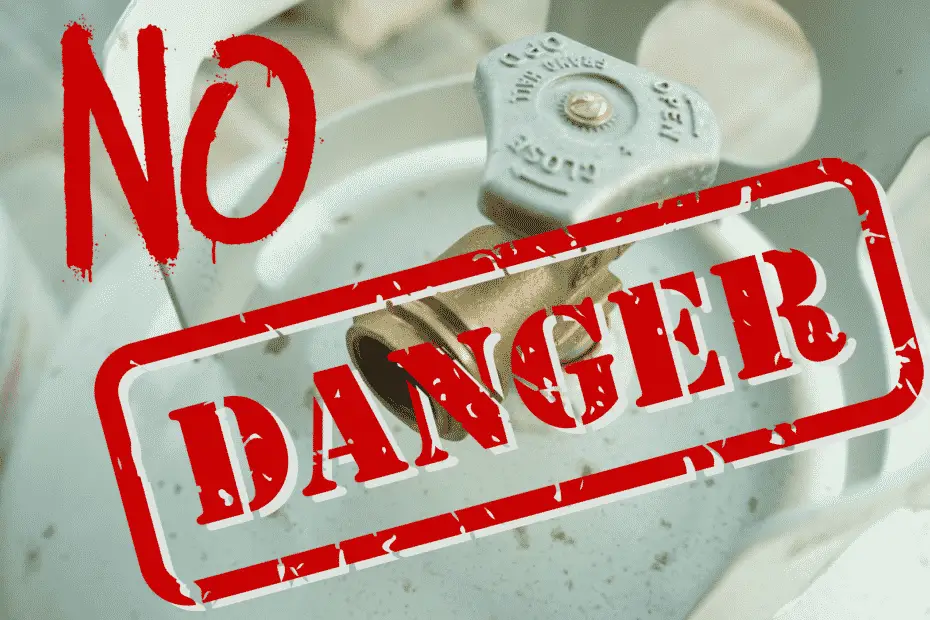Most people are concerned about two things when they first buy a propane heater to use in their tent. They worry about the tent catching on fire and carbon monoxide. Those are some legitimate concerns, but is it safe to use a propane heater in a tent? Yes it’s perfectly safe to use a propane heater inside your tent, but there are a few safety tips you need to follow.
How do you use a propane heater in a tent? You can use a propane heater in your tent if there’s a carbon monoxide and low oxygen safety shutoffs, tipover protection, and catalytic heater with wire guards. Propane heaters are no more dangerous than other options when you combine all of these safety features. There’s a very low risk of fire, burning yourself/gear, and carbon monoxide poisoning.
Be careful when choosing a propane heater, because most aren’t designed to be used indoors. You need to focus solely on camping heaters since they’re designed for ventless setups (like a tent). Most of the tube style heaters and heaters that work on top of a full sized propane tank won’t be safe in a tent.
The Mr Heater Little Buddy Heater and Big Buddy heaters are by far the most popular tent heater on the market. I’ve used a little buddy heater since I was a cub scout in elementary school and I’ve never had any trouble. With that being said, I do follow a few simple rules to reduce the very small risk of carbon monoxide poisoning and fire.
Table Of Contents
It’s Safe To Use Propane Heaters In Tents
Camping in cold weather doesn’t have to be a freezing miserable experience. Pair the right sleep system with a propane camping heater and you can be downright cozy. Just make sure you choose a propane heater that’s designed to be used in a tent.
There are two types of portable propane heaters on the market. You have vented heaters that you use outdoors and highly efficient ventless heaters that are safe to use in a tent. Choosing the wrong heater can lead to a dangerous situation once carbon monoxide builds up.
Portable propane camping heaters need to be equipped with a handful of safety features. The Mr Heater Buddy, Big Buddy, and Buddy Flex Heaters are the only propane heaters that are safe to use in a tent. They also sell a Little Buddy heater, but that’s basically worthless in a tent. I’ve seen a few Mr Buddy clones over the years, but they’ve never been any cheaper.
Now lets go over a short list of safety features you find in the buddy heaters. You should be able to quickly see why other propane heaters may be dangerous in a tent. I will also go over the 3 best propane heaters below (Hint: they’re all Mr Buddy’s).
Must Have: Propane Camping Heater Safety Features
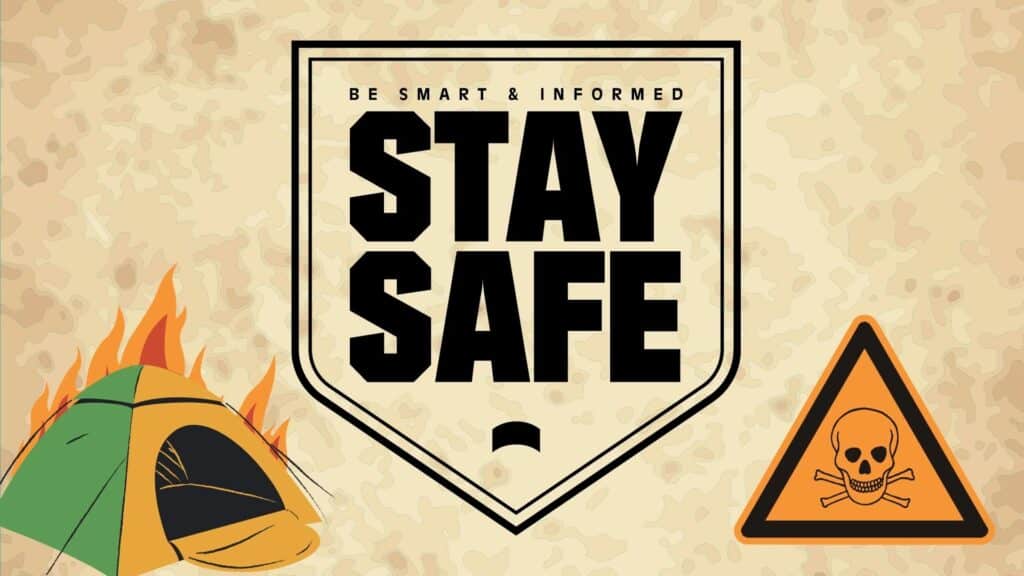
Here’s a short list of safety features that you need in a propane tent heater. These features are necessary for preventing carbon monoxide poisoning, fires, and burns.
- Ventless Efficient Burner (carbon monoxide): All propane heaters produce carbon monoxide, but some models are better than others. Mr Heater uses a highly efficient burner that reaches nearly complete combustion so it only releases trace amounts of carbon monoxide well within the safety range. Pair that with the fact that tents are well ventilated, plus the carbon monoxide sensor, and there’s very little risk of carbon monoxide poisoning.
- Carbon Monoxide Sensor: The Mr Heater has a carbon monoxide sensor so it will automatically shutoff if you reach unsafe carbon monoxide levels. I recommend shutting off your propane heater before bed and you may want to carry a backup carbon monoxide detector just in case.
- Oxygen Depletion Sensor: This doesn’t apply in a tent since they’re not airtight, but there’s also an oxygen depletion sensor. The only time this would be useful is if you’re using the heater in a small airtight space like a car or camper van.
- Safety Guard: There needs to be a metal screen over the heating element to protect your body/gear from the heating element.
- Tip-Over Protection: The heater will automatically shutoff if you knock it over. I’ve knocked my heater over a few times and never had any issues inside my tent. It shuts off automatically and the grill guard keeps the heating element away from the tent floor. I do use my heater on a baking sheet just in case, but I don’t know if that’s necessary.
- No Risk Of Overheating With 3 Heat Settings: There are 3 heat settings to control how much heat will come out of the heater. The low setting will run for 5+ hours, medium 3+ hours, and high 2+ hours. I recommend using the medium or high setting when in a tent, because the low doesn’t give off much heat.
- Push Ignition: You never use a lighter or any type of flame to heat up this propane heater. It has Piezo ignition that starts reliably every time. I’ve been using my Buddy Heaters for 20+ years and never had any problems starting them.
Best Propane Tent Heater: Comparing Mr Buddy Heaters
There’s really no bad buddy heater! The entire Mr Heater Buddy Lineup is safe to use in your tent. All of the buddy heaters use the same basic design and safety features, but there are a few minor differences.
It mostly boils down to the size of the heater, amount of heat output, number of propane tanks used, burn rate, and the Flex Heater also includes a propane stove attachment (sold separately). The Little Buddy heater is also safe to use in a tent, but it’s not big enough to heat a tent so I won’t bother going over it.
The heaters are also available in a handful of color styles, but red is usually the cheapest since it’s the most popular. I’ve also seen black, camo, yellow, gray, green, and blue, but I don’t think it’s worth the extra money.
I own the Mr Heater Buddy, Big Buddy, and Buddy Flex Heaters. The Big Buddy gets used in my woodshop, Little Buddy gets used for camping, and I haven’t had much of a chance to use the Buddy Flex yet, but it seems like a great omnidirectional heater.
1) Mr Heater Buddy Flex
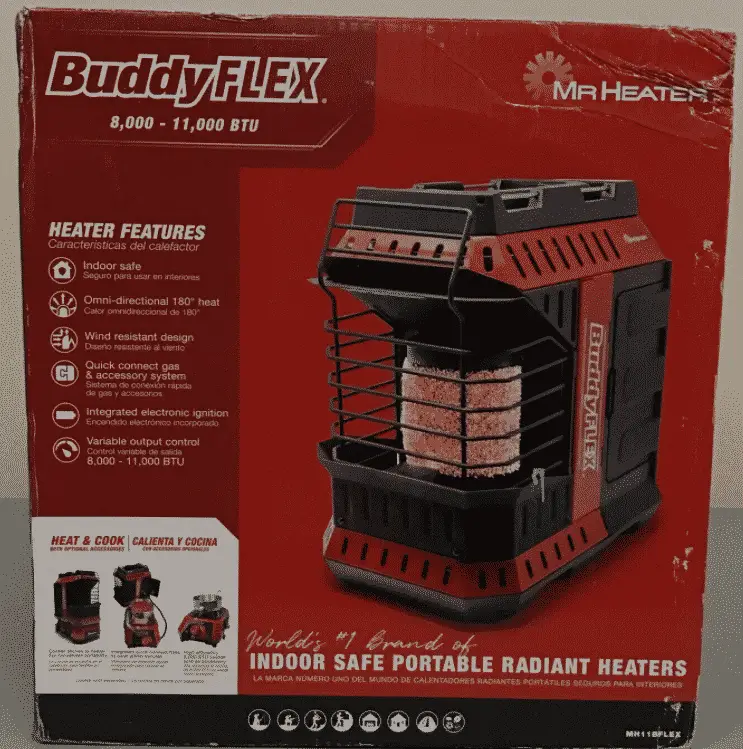
I haven’t had much of a chance to use my Buddy Flex propane heater since I just bought it, but it seems promising. There are two new features added to the design. It has a omnidirectional heater and can be hooked up to a small propane stove (sold separately).
It puts out 11,000 Btus of heat which falls in the middle of the Big Buddy (18,000 BTU) and Buddy (9,000 BTU) heaters. It uses a single 1lb propane tank so the runtime will be shorter than both the Big Buddy and smaller Buddy heater. It has an advertised runtime of 3.5 hour on low and 2 hours on high with a 1lb propane cylinder.
I’ve always used the smaller 9,000 BTU Buddy Heater in my tent, so it’s hard to say if you need the extra heat of the Big Buddy (I doubt it). I use it on the medium heat setting, which is perfect for chilly 40°-50° nights. It raises the temperature about 15°F and it’s a good balance between heat and longer 4 hour propane burn rate.
There isn’t much of a price difference between the Big Buddy and Buddy Flex model. Buddy Flex is usually a little bit cheaper and the omnidirectional element is really nice to have when you’re sitting with friends on a cold night. The Big Buddy is a little bit warmer, but you need to be in front of it to feel the heat.
The Buddy Cooker (check out the price) that can be hooked up to this heater is a cool feature, but I have a hard time recommending it. It seems to work really well, but there are so many other cheap single burner propane cooktops available at a fraction of the price.
I don’t see why the Buddy Flex Cooktop is any better than cheap single burners like the GasOne Single Burner Stove. You wouldn’t be able to use a separate stove and your Flex Heater at the same time, but you can buy an extra 1lb propane tank to use with the stove for like $4 at Walmart.
2) Mr Heater Buddy
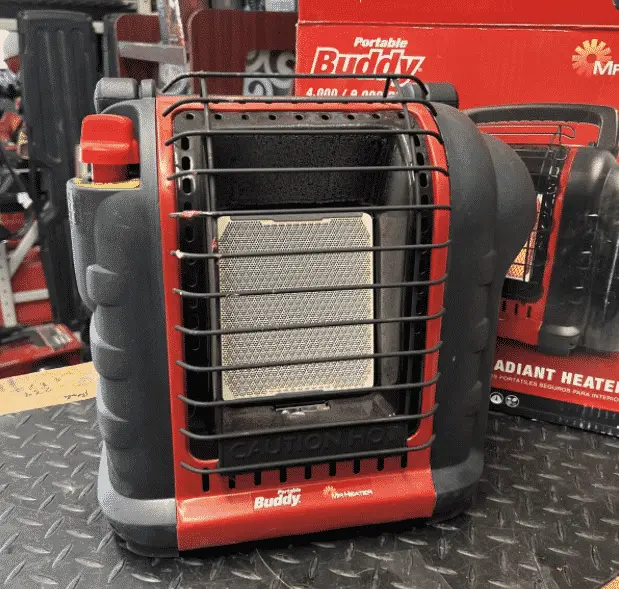
The mid-sized Big Buddy heater is the perfect blend between price and function. It’s well designed, surprisingly affordable, and puts out a lot of heat. You still need a well thought out sleep system on freezing nights, but it puts out more than enough heat to hang out in your tent on 40°-50°F nights.
The Buddy heater puts out 9,000 BTUs of heat per hour using a single 1lb propane tank. It’s perfect for hanging out on chilly spring/fall nights and heating up your tent in colder weather. The advertised 5.4hr on low and 2.4 hours on high runtime seems very accurate based on all the times I’ve used it.
I’ve been using my Buddy heater for 20+ years and don’t have a single complaint. Out of the entire time I’ve only needed to clean out the fuel lines once. It’s by far the most reliable heater I’ve ever owned.
3) Mr Heater Big Buddy
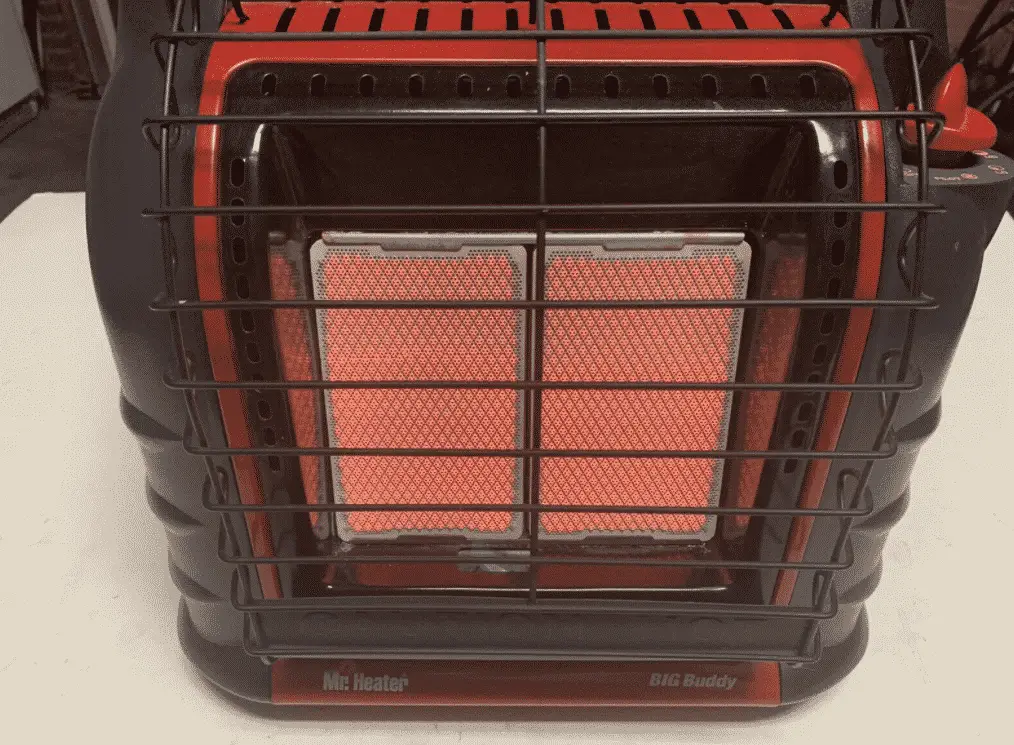
I had a hard time choosing whether to put this heater at the top of this list or bottom. As the warmest heater on this list it deserves a spot at the top, but there are a few things that made me question the decision. With that being said, I really love my Big Buddy Heater and it’s the warmest tent heater available so it’s well worth a look.
The price is by far the biggest problem I have with the Big Buddy Heater. It’s really nice to have the extra heat, but I could by 2 Buddy heaters for a little bit more than a single Big Buddy. It’s basically just 2 of the smaller buddy heaters lined up in one unit.
I actually own 2 of the smaller Buddy heaters after picking one up at a garage sale last year. Strategically placing 2 buddy heaters around your body is way warmer than a single Big Buddy placed in front of you.
It also sucks that the low setting on the Big Buddy is equal to the highest setting on the little buddy. That’s nice when you need to run the heater for a long time on low since it has a 5+ hour burn time, but it uses dual 1lb propane cylinders and you burn through the tiny tanks fast.
I’m not willing to blow through $5 of propane per hour running it on high so I never go past the medium setting anyway. I get around that by using it heater with my full-sized propane tank and a quick connect hose. You can do the same thing with the mid-sized Buddy heater, but it doesn’t have a quick connection (need a 1lb to 20lb adapter).
Propane Heaters Are The Best Way To Heat Your Tent Without Electricity
Propane heaters are by far the best option when cold weather camping. They’re highly efficient, portable, and provide a crazy amount of heat. Most camping tent heaters run off of 1lb disposable propane tanks, but you can use a 1lb to 20lb propane tank adapter if you need it to run longer than 5ish hours.
Mr Heater is by far the most popular propane camping heater on the market. I’ve been camping with my buddy heater for as long as I can remember. I’m still using the same Mr Heater Buddy that I got for Christmas as a cub scout in elementary school.
The only downside to propane heaters is that they always emit trace amounts of carbon monoxide. This shouldn’t be a problem since tents are well ventilated, but it’s worth mentioning. Breathing in trace amounts of carbon monoxide isn’t a big deal, but you wouldn’t want to use a propane heater in a winter/mountaineering tent.
Winter tents are designed to cut off ventilation so the noxious fumes won’t have any place to go. You will also run into condensation issues when you combine the heat and extra water vapor from burning propane.
You really shouldn’t need a heater in a mountaineering tent anyway. A 25°F temperature difference is good enough for most camping situations. You also have your warm clothing and cold weather sleep system so you should be fine without a heater.
Main Advantages:
- Lots Of Warmth At An Affordable Price: Propane Heaters offer by far the most tent warmth for your dollar. A typical propane heaters will heat over 225 square feet of tent space(that’s a big tent).
- Built In Safety Features: All propane camping heaters are designed with built in safety features. They have tip over protection, enclosed heating elements, and carbon monoxide detectors. Trace amounts of carbon monoxide gets released into the air, but it will quickly make its way out of the tent.
- Lightweight and Portable: Propane camping heaters are designed with transportation in mind. They have lightweight bodies, built in handles, and run off 1lb disposable propane tanks. They’re far too heavy for backpacking, but they’re perfect for primitive campgrounds.
Is it Safe to Use a Propane Heater in a Tent?
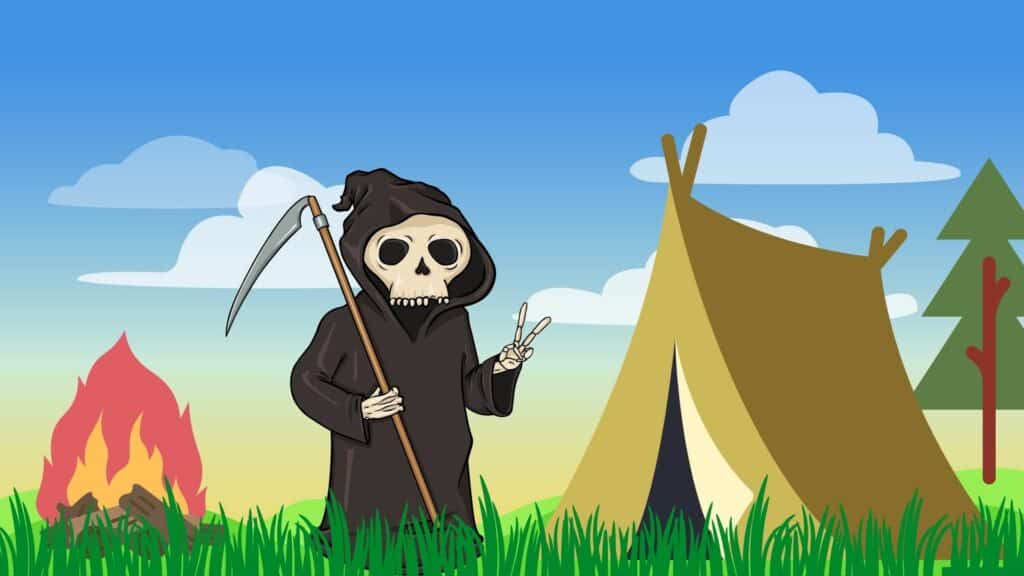
Throughout the past 20 years I’ve been using a propane heater in my tent. At first I was wary, but throughout the years they’ve proven perfectly safe There are a few things you need to keep in mind when buying a propane heater.
- Enclosed Heat Source: Only buy propane heaters that have an enclosed heat source. The Mr Heater pictured above has its heat source enclosed in a metal cage. You could catch something on fire if you aren’t careful, but it’s highly unlikely.
- Tip Protection: Find a heater that automatically shuts off when it tips over.
- Burns Without Carbon Monoxide: Most of the modern propane tent heaters use a catalytic technology that limits carbon monoxide. Since carbon monoxide is tasteless, odorless and deadly this is a must have feature in a unventilated place.
Propane tent heaters are relatively safe! Having said that there are a few dangers that you need to keep in mind. Obviously these heaters are going to produce heat so keep them away from the rest of your gear.
You don’t want to accidentally toss a jacket on top of the unit. It’s not an open flame so it won’t automatically ignite, but it will slowly melt and eventually catch fire. It really all boils down to common sense.
You’ll also need some ventilation since you’re burning propane. All you really need is a small screened in window zipped open near the heater.
Look For Catalytic Tent Heaters
Most camping heaters are catalytic, which basically means they heat without a flame. Catalytic heaters are highly efficient so they don’t produce much carbon monoxide. That’s a big deal since you’re in a tiny enclosed tent.
The other advantage of catalytic heaters is that they won’t catch your gear on fire. I don’t recommend laying gear against the heater, but it takes a very long time to catch something on fire with a catalytic heater. You will need to put the heater on a baking pan to radiate the heat up and protect your tent floor from melting.
Shut-Off The Heater Before Bed
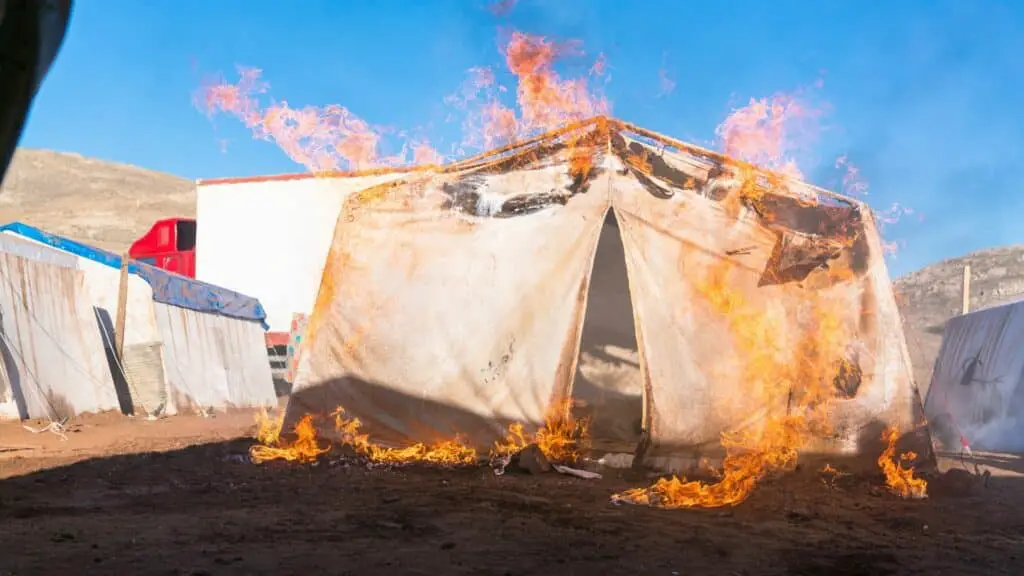
Some people leave their propane heaters burning while they sleep, but that’s a bad idea. I twist and turn in my sleep and I can just imagine burning a big old hole in my sleeping bag. The risk of burning down your tent is low due to the tip-over shutoff and grill guard, but it can happen.
Plus if there’s a ventilation issue you’d never be able to recognize the signs of carbon monoxide. Instead of sleeping with the heater on I like to turn it on 1 hour before bed. Crank up the heat until the tent is hotter than you actually need. It’s more about getting the tent comfortable and warming up the sleeping bag.
Your sleeping bag should be doing the heavy lifting throughout the night. A high quality sleeping bag will keep you warm until morning. Check out my post on dressing in layers in your sleeping bag.
If it gets unbearably cold in a couple hours, kick on the heater for 5-10 minutes and you should be good to go for a while. You can also purchase a sleeping bag liner to add more warmth to your sleeping bag. The Sea To Summit Reactor Liner adds 25°F to your bag and even a cheap Coleman liner adds 12°F to a sleeping bag.
Proper Ventilation
Even though modern camping heaters are designed to reduce the risks of carbon monoxide poisoning it’s always a good idea to ventilate your tent. Even on the coldest night cracking a window isn’t going to stop your heater from heating the tent. You can also open up the door in your vestibule and set the heater nearby.
Recognizing Signs of Carbon Monoxide Poisoning
It doesn’t matter how careful you are when you work with propane there’s always a risk of carbon monoxide poisoning. Since carbon monoxide is a tasteless odorless gas it’s difficult to recognize the signs.
Main symptoms
- Dull Headache That Doesn’t Go Away
- Muscle Weakness
- Dizzyness, Nausea and Vomiting
- Confusion and Shortness of Breath
- Blurred Vision
- Loss of Consciousness
Carbon Monoxide poisoning is extremely dangerous especially for people who are sleeping or intoxicated. Never sleep with a propane heater in your tent and if you notice signs of carbon monoxide shut off the heater, ventilate your tent thoroughly and go outside.
Other Tips to Stay Warm in Your Tent
- Winter Sleeping Bag: If you’re going camping in the winter you can’t just use any old sleeping bag. When camping in the United States and Southern Canada you can typically get away with a zero degree sleeping bag.
- Use a Sleeping Bag Liner: Sleeping bag liners are going to protect your bag from dirt and make it much warmer. I actually use this sleeping bag liner in place of my bag during the summer and then inside my bag in the winter. It adds about 25 degrees of warmth to my bag so I don’t have to worry about being cold.
- Sleeping Pads Increase Insulation: Sleeping pads are going to increase the insulation between your body and the cold ground. Even a cheap foam sleeping pad (like this one) will make a major difference throughout the night.
- Dress in Layers: Some people like to sleep naked in a sleeping bag, but during the winter you should dress in layers. Check out my post on layering clothes in a sleeping bag for more info.
- Stay Dry: Dampness is a recipe for a cold night. Even on snowy days you need to work to keep all your wet gear outside and keep your tent ventilated.
